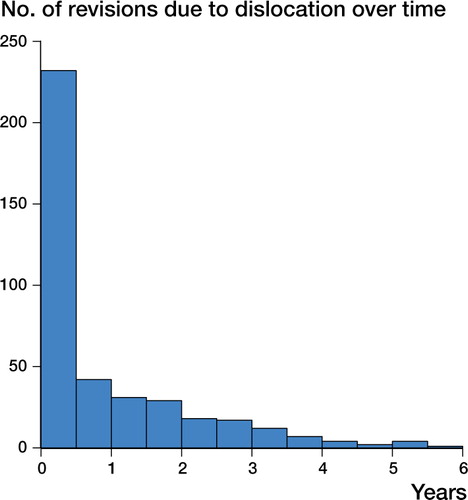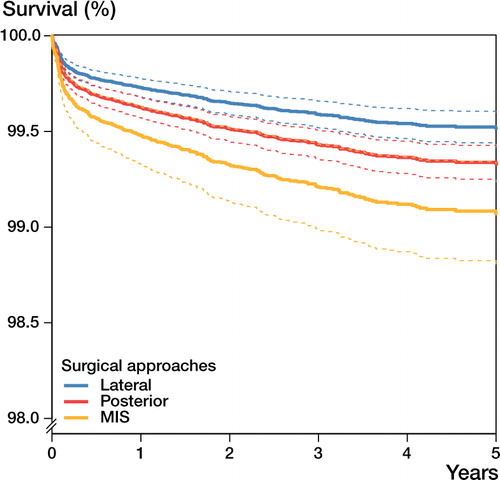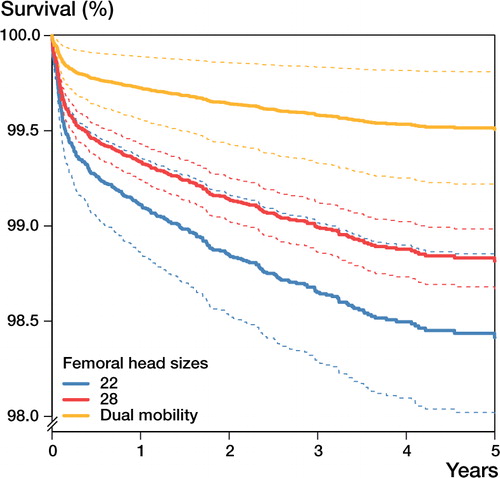Figures & data
Table 1. Age at index THA
Table 2. Diagnosis at index THA
Table 3. Head diameters inserted at index THA
Table 4. Head size by diagnosis or by surgical approach
Table 5. Cup types inserted during index THA
Table 6. Cox regression analysis of risk factors for revision due to dislocation a
Figure 1. Frequency of revision surgery due to dislocation plotted against time elapsed after the index procedure.

Figure 2. Survival functions with the endpoint “revision due to dislocation” by surgical approach. A Cox proportional hazards model was used in order to calculate adjusted survival functions with 95% CI (dotted lines) for the 3 surgical approaches lateral (n = 35,460), posterior (n = 41,904), and minimally invasive (n = 734). The endpoint was revision due to dislocation. Survival functions were adjusted for the mean of the covariates gender, age, primary diagnosis, and femoral head size. The lateral approach was associated with the lowest risk of revision due to dislocation.

Figure 3. Survival functions for patients with a femoral neck fracture with the endpoint “revision due to dislocation” by femoral head size. A Cox proportional hazards model was used to calculate adjusted survival functions with 95% CI (dotted lines) for patients with a femoral head fracture, for the femoral head sizes 22 mm (n = 1,394) and 28 mm (n = 57,194), and dual-mobility cups (n = 287). The endpoint was revision due to dislocation. Survival functions were adjusted for the mean of the covariates gender, age, and surgical approach but fixed for the diagnosis femoral neck fracture. Dual-mobility cups were associated with the lowest risk of revision due to dislocation.
